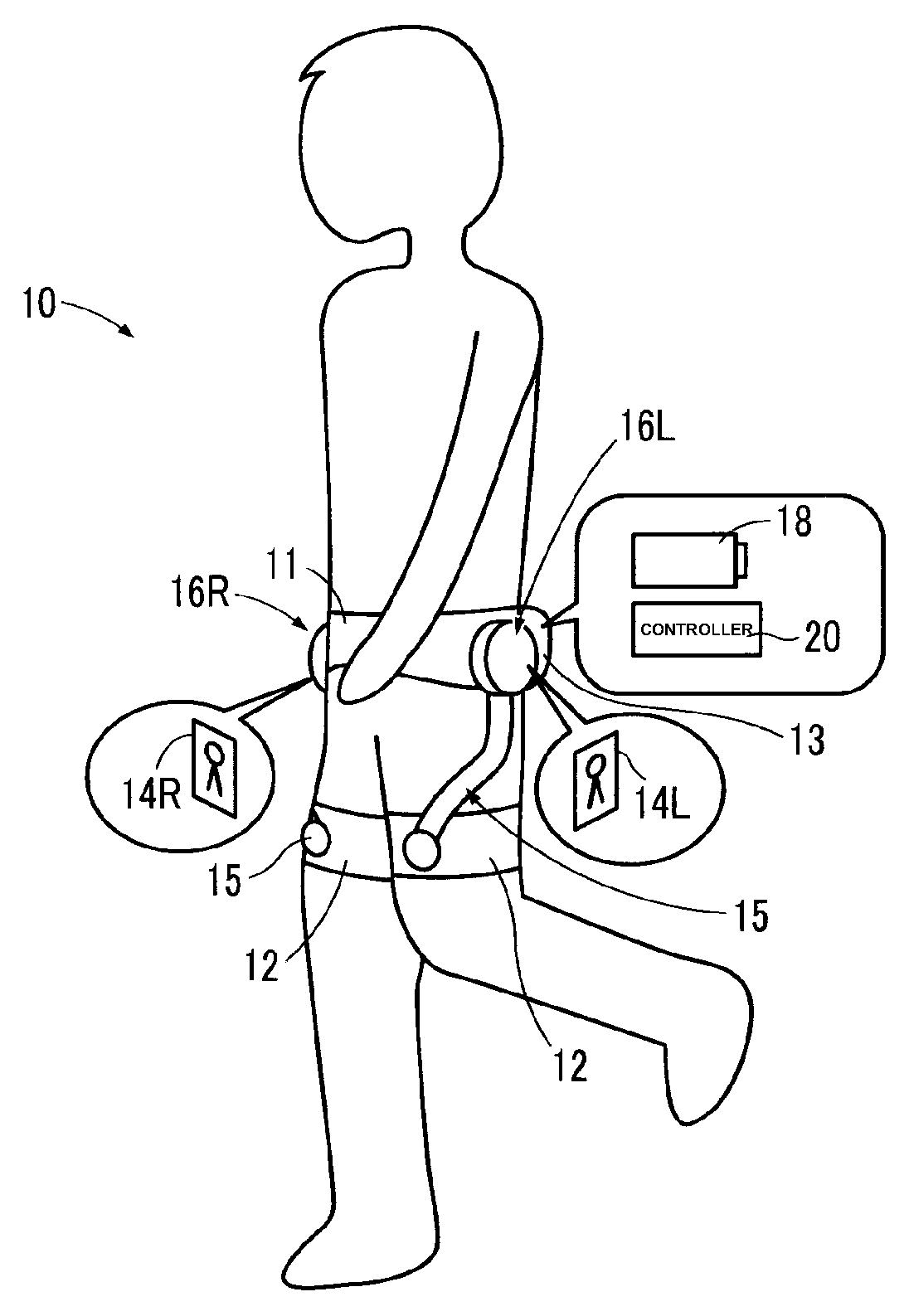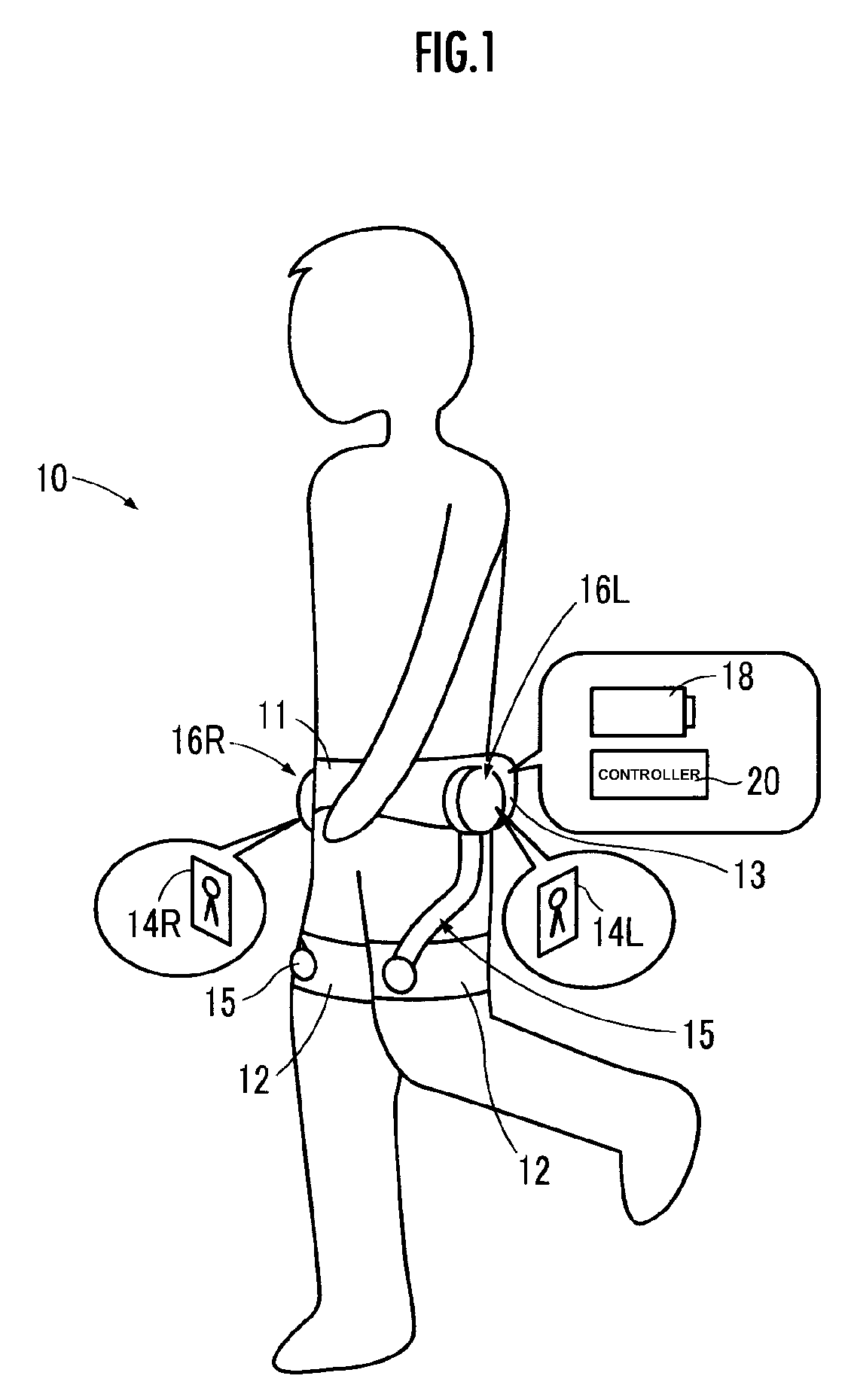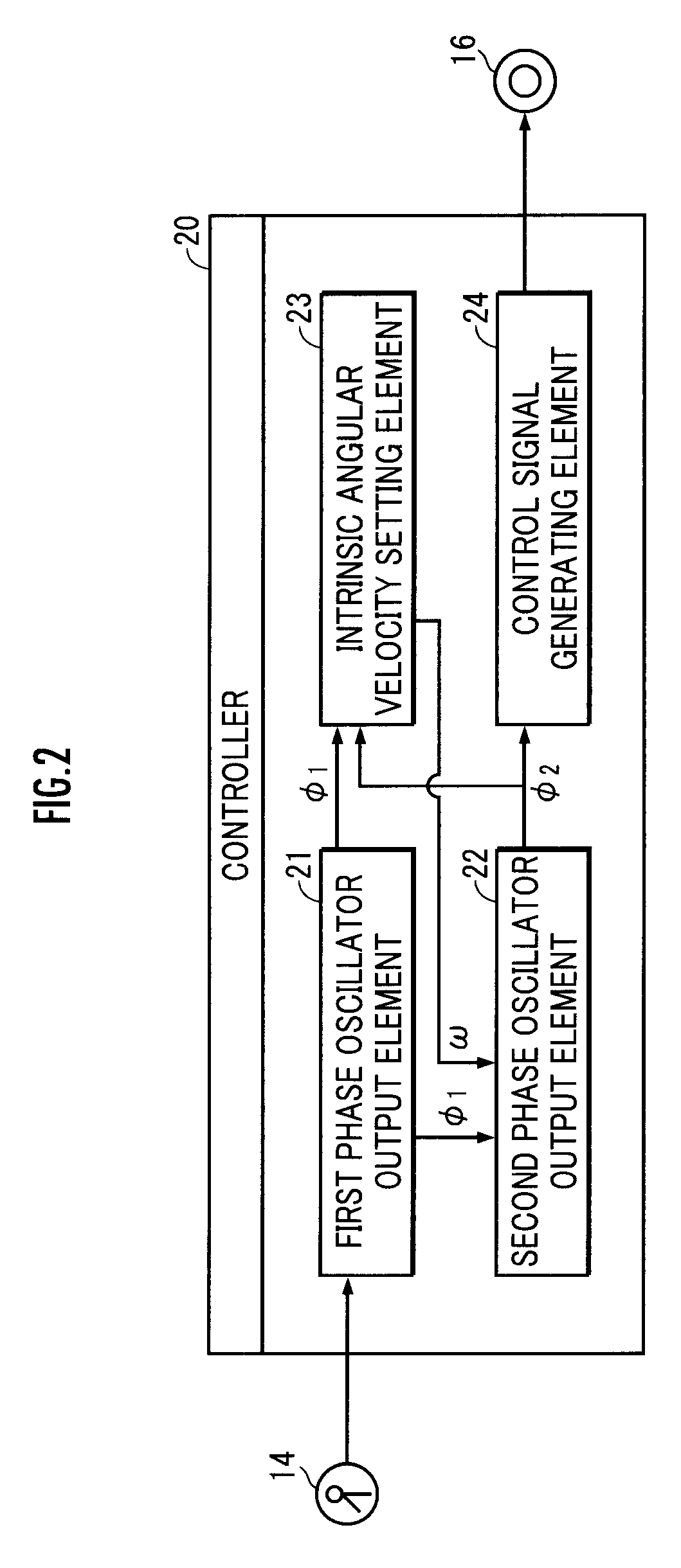Walking assist device
a technology of assist device and walking aid, which is applied in the field of walking assist device, can solve the problems of high possibility of inappropriate operation cycle of the device, and achieve the effect of reducing the number of control parameters
- Summary
- Abstract
- Description
- Claims
- Application Information
AI Technical Summary
Benefits of technology
Problems solved by technology
Method used
Image
Examples
first embodiment
(Functions of the Walking Assist Device (First Embodiment))
[0049]A first embodiment of the method for controlling the operation of the walking assist device 10 by the controller 20 will be described.
[0050]First, the first phase oscillator output element 21 measures and outputs the phase of a human periodic motion as a first phase oscillator φ1=(φ1L, φ1R) on the basis of an output of the hip joint angle sensor 14 (STEP01 of FIG. 3).
[0051]As illustrated in FIG. 4, if a thigh is regarded as a segment having a hip joint location as one end thereof, then a hip joint angle θ is defined as the angle formed by the segment observed sideways and the basic forehead surface. The basic forehead surface circularly moves about an axial line passing the right and left hip joints as the upper body tilts in the longitudinal direction. The hip joint angle θ is defined such that it takes a positive value when the segment denoting a thigh is in a state located ahead of the basic forehead surface, while ...
second embodiment
(Functions of the Walking Assist Device (Second Embodiment))
[0080]A second embodiment of the method for controlling the operation of a walking assist device 10 by a controller 20 will be described. The method for measuring a first phase oscillator φ1 by a first phase oscillator output element 21 (STEP01 in FIG. 3) and the method for setting an intrinsic angular velocity ω by an intrinsic angle setting element 23 (STEP03 in FIG. 3) are the same as those in the first embodiment, and therefore, the descriptions thereof will be omitted.
[0081]A second phase oscillator output element 22 generates a second phase oscillator φ2 such that a first component thereof, which provides the basis for setting the intrinsic angular velocity ω, and a second component thereof, which provides the basis for generating a control signal η, are different from each other (STEP02 in FIG. 3).
[0082]More specifically, a first component φ21=(φ2L, φ2R) of the second phase oscillator φ2 is determined as the solution...
third embodiment
Functions of the Walking Assist Device (Third Embodiment))
[0091]A third embodiment of the method for controlling the operation of a walking assist device 10 by a controller 20 will be described. The third embodiment is the same as the first embodiment except for the method for generating a control signal η, so that the description of the same arithmetic processing will be omitted.
[0092]The control signal generating element 24 adjusts the values of a first control coefficient C1=(C1L or C1R) and a second control coefficient C2=(C2L or C2R) in relational expressions (141) and (142), respectively, according to relational expressions (143) and (144), respectively, to generate a control signal η (STEP04 in FIG. 3).
C1L=C1R=(½)Carc sin(W0 / LLEG) (143)
where W0 denotes a desired stride length; LLEG denotes the length of a leg (the distance from a hip joint to a sole of a human being); and C denotes a gain coefficient (a fixed value).
C2L=(½)C(|θLmax|+|θRmin|), C2R=(½)C(|θRmax|+|θLmin|) (14...
PUM
 Login to View More
Login to View More Abstract
Description
Claims
Application Information
 Login to View More
Login to View More - R&D
- Intellectual Property
- Life Sciences
- Materials
- Tech Scout
- Unparalleled Data Quality
- Higher Quality Content
- 60% Fewer Hallucinations
Browse by: Latest US Patents, China's latest patents, Technical Efficacy Thesaurus, Application Domain, Technology Topic, Popular Technical Reports.
© 2025 PatSnap. All rights reserved.Legal|Privacy policy|Modern Slavery Act Transparency Statement|Sitemap|About US| Contact US: help@patsnap.com



